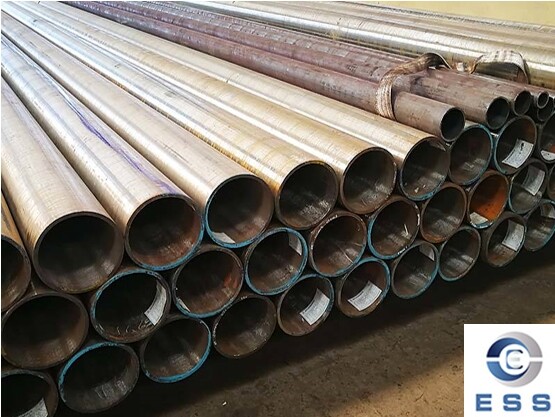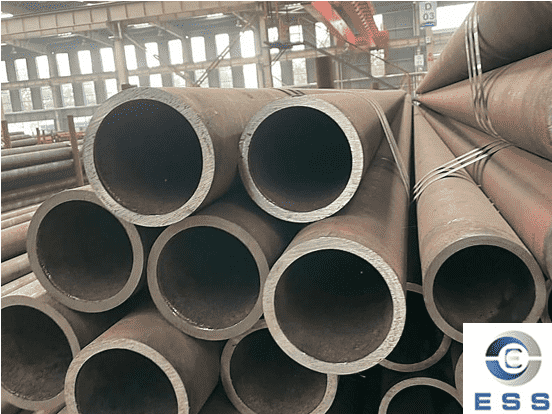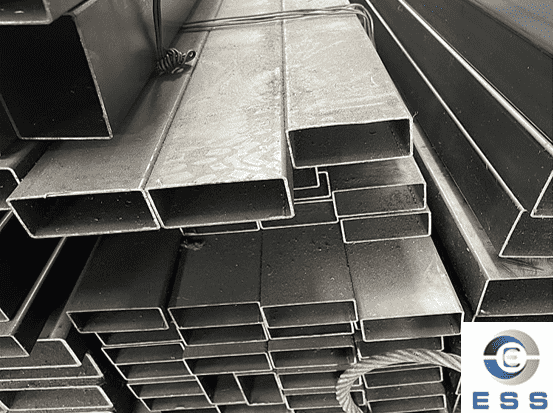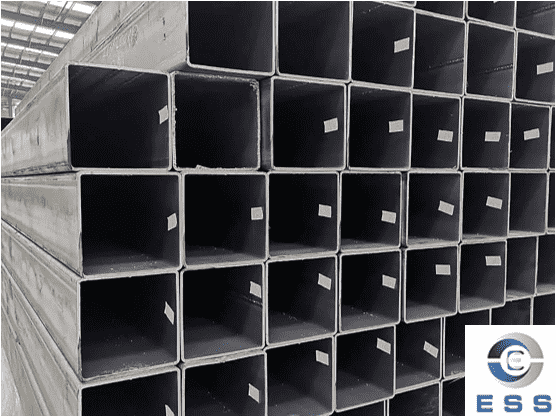
As the basic material in the industrial
field, the specification parameters of carbon seamless
steel pipe directly affect the engineering selection and performance. The
following systematically sorts out the specification and technical points of
carbon seamless steel pipe from the aspects of standard system, specification
analysis, material performance and application scenarios.
Standard system and classification
The three major standard systems mainly
implemented in the world are ASTM (American standard), DIN (German standard)
and GB/T (national standard). The national standard GB/T 8163-2018 divides
carbon steel seamless pipes into:
Structural pipes (such as 20#, 45# steel):
outer diameter 6-630mm, wall thickness 1-50mm
Fluid transport pipes (such as Q345B):
outer diameter 10-1220mm, wall thickness 1.5-120mm
High-pressure boiler
tubes (such as 20G): need to pass -40℃ low-temperature impact test
American standard ASTM A106 is divided into
three grades A/B/C, and the tensile strength is required to be ≥330/415/485MPa respectively.
The German standard DIN 2448 focuses on
precision machinery pipes, and the tolerance is controlled within ±0.3mm.
Analysis of the specifications of carbon
steel seamless pipes
Carbon steel seamless pipes are a kind of
pipes with high strength, toughness and plasticity, which are widely used in
petroleum, chemical, aviation, machinery and other fields. The specifications
of carbon steel seamless pipes generally include outer diameter, wall
thickness, length and material.
1. Outer diameter
The outer diameter of carbon seamless steel
pipe generally ranges from 6mm to 1020mm, and the commonly used outer diameters
are 57mm and 76mm. The larger the outer diameter, the thicker the pipe wall and
the stronger the load-bearing capacity.
Small diameter: 6/10/13/17/21/27 (for
precision instruments)
Conventional diameter: 32/38/42/48/57
(mainstream of hydraulic
piping system)
Large diameter: ≥159mm
(oil and gas trunk pipeline)
2. Wall thickness
The wall thickness of carbon seamless steel
pipe generally ranges from 1mm to 100mm, and the commonly used wall thicknesses
are 5mm and 6mm. The thicker the wall, the stronger the load-bearing capacity
of the pipe.
Series number: Sch5 to Sch160, such as
Sch40 means pressure bearing 4MPa
Wall thickness formula: δ=(P×D)/(2σφ+P) (P
pressure, D diameter, σ allowable stress, φ weld coefficient)
3. Length
The length of carbon seamless steel pipe
generally ranges from 6 meters to 12 meters, and the length can be customized
according to needs.
4. Material
The material of carbon seamless steel pipe
is generally 20#, 45# and Q345, etc. Different materials are selected according
to different application scenarios.
Fixed length: 6m/9m/12m (commonly used in
building structures)
Multiple length: 1.5m (maximum 18m)
Rolled pipe: outer diameter ≤114mm can be delivered in rolls
Carbon steel seamless pipe specification
list
The following table lists the commonly used
carbon steel seamless pipe specifications:
|
Model
|
Size (outer diameter × wall thickness)
|
Type
|
|
20#
|
57mm×5mm
|
Ordinary
|
|
45#
|
57mm×6mm
|
Ordinary
|
|
Q345
|
76mm×6mm
|
Ordinary
|
|
20#
|
57mm×5mm
|
Precision
|
|
45#
|
57mm×6mm
|
Precision
|
|
Q345
|
76mm×6mm
|
Precision
|
Material mechanical properties
comparison
|
Steel grade
|
Yield strength (MPa)
|
Tensile strength (MPa)
|
Elongation (%)
|
Applicable temperature
|
|
20#
|
245
|
410
|
24
|
-20~450℃
|
|
Q345B
|
345
|
470-630
|
22
|
-40~475℃
|
|
ASTM A106B
|
240
|
415
|
30
|
-29~425℃
|
Special working conditions need to be
noted:
Low temperature environment: L245NB and
other cold-resistant steel grades should be selected below -46℃
Corrosive environment: ST45.8 galvanized
pipe (zinc layer ≥80μm) is
recommended
Typical application scenario
specification matching
1. Engineering machinery hydraulic system
Excavator main oil pipe: Φ42×5mm 27SiMn steel
Crane outrigger: Φ168×14mm Q460C
2. Energy transportation field
Shale gas gathering and transportation
pipeline: Φ323.9×7.1mm L360N
Heat network: Φ630×8mm 20# steel + polyurethane insulation layer
3. Special equipment manufacturing
Pressure vessel shell: Φ1020×16mm Q345R
Marine boiler tube: Φ38×3.5mm 20G
Read more: Roughness of carbon steel pipe or Thermal conductivity of carbon steel pipe













 Eastern Steel Manufacturing Co.,Ltd not only improve product production and sales services, but also provide additional value-added services. As long as you need, we can complete your specific needs together.
Eastern Steel Manufacturing Co.,Ltd not only improve product production and sales services, but also provide additional value-added services. As long as you need, we can complete your specific needs together.










